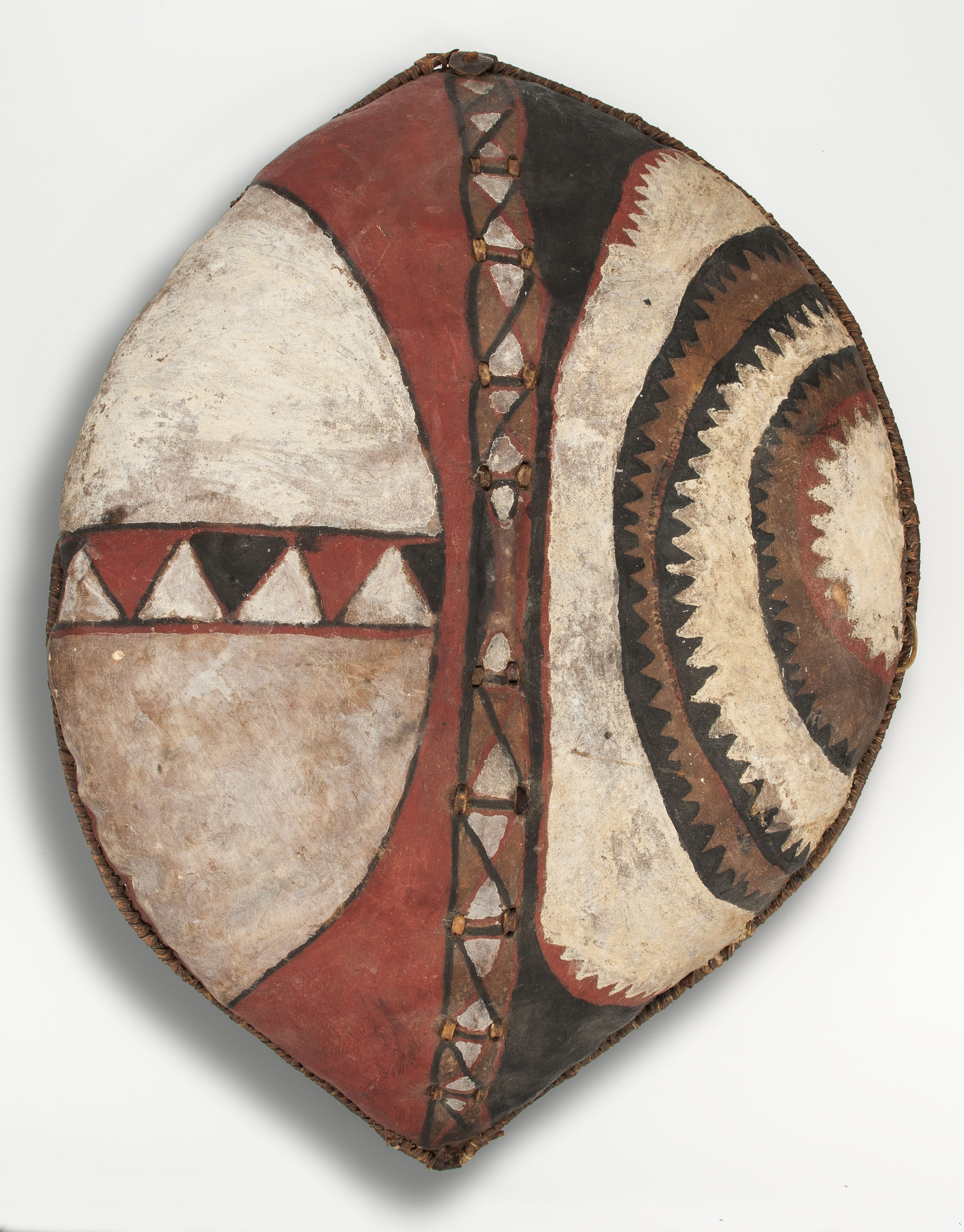Today is the last day of our special "DailyArt presents Arts". On February 26th Indiana University Art Museum will be opening a special exhibition on a large collection of traditional artwork from Kenya that the museum purchased last year. This collection positions IU the premier art museum in the United States for research in traditional Kenyan visual arts. Enjoy :)
One of the best known stereotypical images from East Africa is the Maasai warrior, standing tall and proud, holding a shield and a long spear. Indeed, a shield, such as this one, was one of the most important objects owned by a Maasai warrior, or moran, which he used not only in warfare and hunting but also as an indicator of his status and prestige. A moran made his own shield from the hide of a buffalo he had hunted and killed. He sewed the hide to a wooden frame, and attached a wooden handle to the center of the back. Patterns painted in red, black, and white predominate on the front, and all colors were obtained from natural sources: red from mixing earth with blood or the red sap from a particular fruit, white from local clay, and black from the skins of burned calabashes or gourds. Researchers believe that the designs on Maasai shields once related to subgroups and lineages or indicated personal achievements of the shield’s owner; however, the meanings of most of those patterns are no longer understood. Clearly utilitarian in nature, this shield shows the blurring between art and craft that is found in much traditional African art. The bold, asymmetric patterning also serves as an example of the dynamic, expressive quality common of African art that has attracted collectors of contemporary European and American art.


 Unknown Artist
Unknown Artist